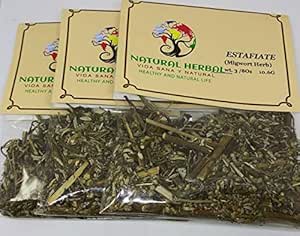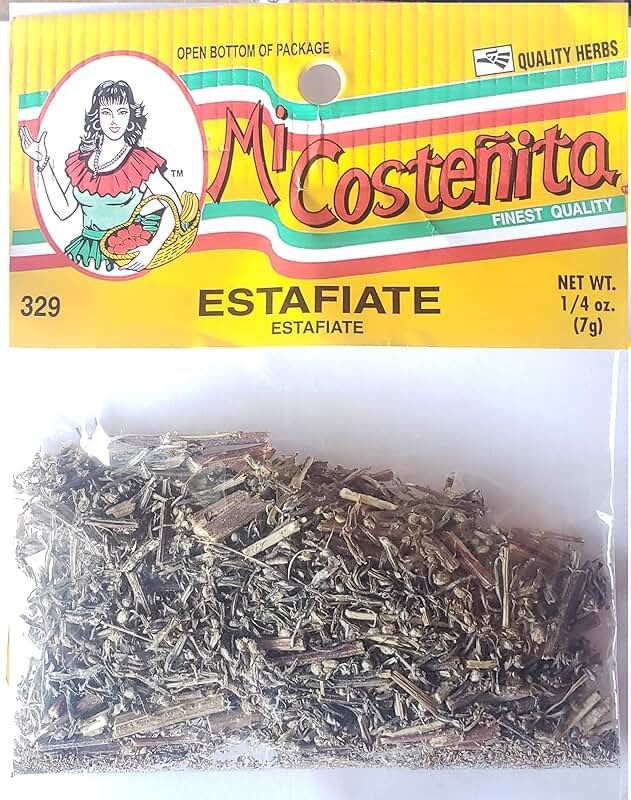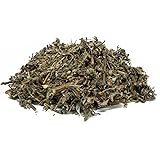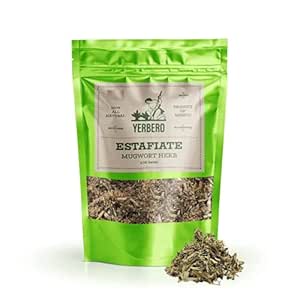In the realm of herbal remedies, few have stood the test of time like estafiate. This ancient herb, known scientifically as *Artemisia ludoviciana*, has been celebrated for its myriad of health benefits and medicinal properties across various cultures. From its use in traditional medicine to its modern applications, estafiate offers a fascinating glimpse into the world of herbal healing. In this article, we will explore the history, benefits, and various applications of estafiate, along with compelling case studies and statistics that highlight its significance.
Understanding Estafiate: A Historical Perspective

Estafiate, often referred to as “sagebrush” in English, has deep roots in both indigenous and traditional healing practices. Native American tribes have utilized this herb for centuries, recognizing its potential in treating various ailments. Historically, estafiate has been employed for:
- Digestive disorders
- Respiratory issues
- Menstrual pain
- Skin conditions
The herb’s unique aroma and flavor have also made it a popular choice in culinary applications, particularly in Mexican cuisine. Its bitter taste and aromatic properties have contributed to its use not just as a medicinal herb but also as a culinary staple.
The Chemical Composition of Estafiate

One of the reasons estafiate has gained a reputation as a powerful herbal remedy lies in its rich chemical composition. It contains essential oils, flavonoids, and various bioactive compounds that contribute to its therapeutic effects. Key components include:
- Thujone: A compound that has been studied for its potential neuroprotective effects.
- Camphor: Known for its anti-inflammatory and analgesic properties.
- Flavonoids: Antioxidants that help combat oxidative stress in the body.
These compounds work synergistically, offering a range of health benefits that have been corroborated by both traditional knowledge and modern scientific research.
Health Benefits of Estafiate
The health benefits of estafiate are numerous, making it a valuable addition to any herbal medicine cabinet. Some of the most notable benefits include:
- Digestive Health: Estafiate is commonly used to alleviate digestive issues such as bloating, gas, and indigestion. Its bitter properties stimulate bile production, aiding in digestion.
- Anti-inflammatory Effects: The compounds in estafiate have been shown to reduce inflammation, making it useful for conditions such as arthritis and muscle pain.
- Antimicrobial Properties: Studies have demonstrated that estafiate possesses antimicrobial activity, effectively inhibiting the growth of certain bacteria and fungi.
- Respiratory Relief: Traditionally, estafiate has been used to alleviate respiratory issues, including coughs and bronchitis, thanks to its expectorant properties.
- Menstrual Support: Many women have turned to estafiate for relief from menstrual cramps and irregular cycles, finding it beneficial for hormonal balance.
Scientific Studies and Case Examples

While much of the knowledge surrounding estafiate comes from traditional practices, modern scientific research has begun to validate these claims. A study published in the Journal of Ethnopharmacology demonstrated that extracts from estafiate exhibited significant anti-inflammatory effects in animal models, supporting its traditional use for pain relief.
Another study focused on the antimicrobial properties of estafiate, revealing its effectiveness against common pathogens such as *Staphylococcus aureus* and *Escherichia coli*. These findings underscore the potential of estafiate as a natural alternative to conventional antibiotics.
In a real-world application, a case study involving a 35-year-old woman suffering from chronic digestive issues found relief after incorporating estafiate tea into her daily routine. Over the course of several weeks, her symptoms significantly improved, leading her to advocate for its use in her community.
How to Use Estafiate

Incorporating estafiate into your health regimen can be done in various forms. Here are some common methods of consumption:
- Tea: Steeping dried estafiate leaves in hot water for 10-15 minutes creates a therapeutic tea that can aid digestion and provide relaxation.
- Extracts: Liquid extracts or tinctures can be taken in small doses for concentrated benefits, often available at health food stores.
- Essential Oil: Estafiate essential oil can be used for aromatherapy or diluted with a carrier oil for topical applications.
- Cooking: Fresh or dried leaves can be used as a seasoning in culinary dishes, adding flavor while offering health benefits.
Safety and Precautions

While estafiate is generally considered safe for most people, it is essential to exercise caution and consult with a healthcare provider, particularly for those who are pregnant, nursing, or taking medications. Some potential side effects include:
- Allergic reactions in sensitive individuals
- Interactions with certain medications, particularly anticoagulants
- Potential toxicity in extremely high doses due to thujone content
Conclusion: Embracing the Wisdom of Estafiate

Estafiate stands as a testament to the enduring power of herbal medicine. With its rich history, diverse health benefits, and growing body of scientific research, this ancient remedy offers a holistic approach to wellness that resonates with many today. As we continue to explore and appreciate the wonders of nature, estafiate serves as a reminder of the invaluable knowledge passed down through generations.
In incorporating estafiate into our lives, we not only honor traditional practices but also embrace the potential of natural healing. Whether you are seeking relief from digestive discomfort, anti-inflammatory support, or simply a flavorful addition to your meals, estafiate may well be the herbal remedy that enriches your well-being.
As we navigate the complexities of modern health and wellness, estafiate offers a bridge to the past, reminding us of the wisdom inherent in nature’s bounty. By exploring its benefits and applications, we can unlock the potential of this remarkable herb and enhance our lives in meaningful ways.